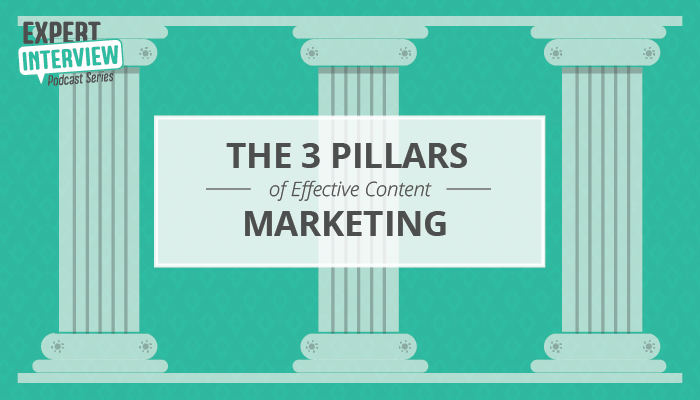Kane Jamison, the Founder at Content Harmony, was a recent guest on the TechnologyAdvice Expert Interview Series podcast, and shared his insight on inbound marketing. The series, which is hosted by TechnologyAdvice’s Clark Buckner, explores the business technology landscape through conversations with industry leaders.
Kane joined Buckner to discuss effective content marketing tools and best practices.
_____
Here are a few of the highlights from the conversation:
TechnologyAdvice: What is it that makes Content Harmony different from other marketing agencies?
Kane: We’re a content marketing agency; we like to say everything we do fits underneath the umbrella of content marketing strategy, content production, and content promotion. What we found is that all the companies we worked with had a real gap in one of those three areas.
Either they had plenty of production and promotion, but didn’t have strategy down, and weren’t reaching the right audience; or they covered the right audience but they weren’t producing enough content.
Another common one is poor promotion: people get strategy and audience down, they’re producing decent content or decent volume levels, but they can’t seem to get any earned media or traffic or leads generated from that content. Often, it’s just a promotional issue, having the right distribution and promotion, and spending enough time and money on it.
TA: It probably hurts the most when you have a great strategy, and fantastic content, but you can’t get the right people looking at it.
Kane: Whatever you think is the issue may not be the underlying cause. A client who comes to us and says we need to do a better job of content, they might actually have a problem with strategy.
They’re not targeting the right audience or producing the right content for the audience they’re trying target. So promotion is the pain point that they’re seeing. That’s the symptom, but not the actual underlying cause.
TA: What was the biggest surprise for you and your clients when you started to focus more on paid media?
Kane: I think it’s how few people actually see it. People just don’t spend the time to do it or realize it or they focus on “Let’s just get this out,” and then move to the next piece of content.
One thing we’re doing recently is not publishing a second piece of content until the last one we’ve worked on has hit 500 pageviews. That forces you to work.
Some clients get into the habit of buying the next piece of content, without first asking, “How many people actually looked at the last one? Maybe we should back up and spend a little more time getting this to the right audience.”
With the capability that we have for targeting the exact audience, we want to see our content on networks like Facebook, or Twitter and LinkedIn; it’s inexcusable to not spend as much time and money promoting the piece as you spent producing it in the first place.
TA: Are there any tips you suggest for how to track your time and ensure you can measure your data?
Kane: We use Freshbooks for time tracking. But Harvest and Toggl are the other two project management tools; I think Toggl and Harvest are a bit stronger on the actual timer tracking unit. All of them are good solutions.
For us it’s an easy way to look at the blog content. It takes us as far as the editing and managing process. So, we can look across the number of clients and say this is how much time we spent on the project type regardless of client.
TA: What are the things that go through your mind when you and your team take on a great new project, and you’re wanting to create a high value asset?
Kane: I think the first and most important part is deciding on goals and metrics that you want to tackle for the project, before you start building out things like topics, format, and figuring out the time will take.
You can’t figure out if the content is good or great unless you determine what the goal was.
At the very top, we’re focused on things like traffic, social shares, links, brand news, visibility. From there, we make sure we know who the audience is; and tied in with that is how we’re going to promote it. If we don’t know one then we can’t answer the other.
That “audience and promotion” plan gets decided upfront of the project rather than saying, “We’ve got a good idea, let’s do this project. We’ll figure out how to promote it afterwards.” The more that we can decide upfront, the more likely we are to have greater results on whatever our promotional goal is.
Deciding those two things is just as important as hitting the right topic for the audience. That’s something we’ve learned the hard way: going into a great topic or format and then having not identified our audience upfront, or a promotion plan.
Once we know that, we can start to figure out the best format for this topic. The strategy side of the project is more important initially than just figuring out how many hours it takes for an infographic, or interactive project.
_____
Learn more about Content Harmony.
Listen to the entire show above in order to hear our full conversation, or (download the show) to listen later. You can subscribe to the TA Expert Interview Series via Soundcloud, in order to get alerts when new episodes are posted.
This podcast was created and published by TechnologyAdvice. Interview conducted by Clark Buckner.




